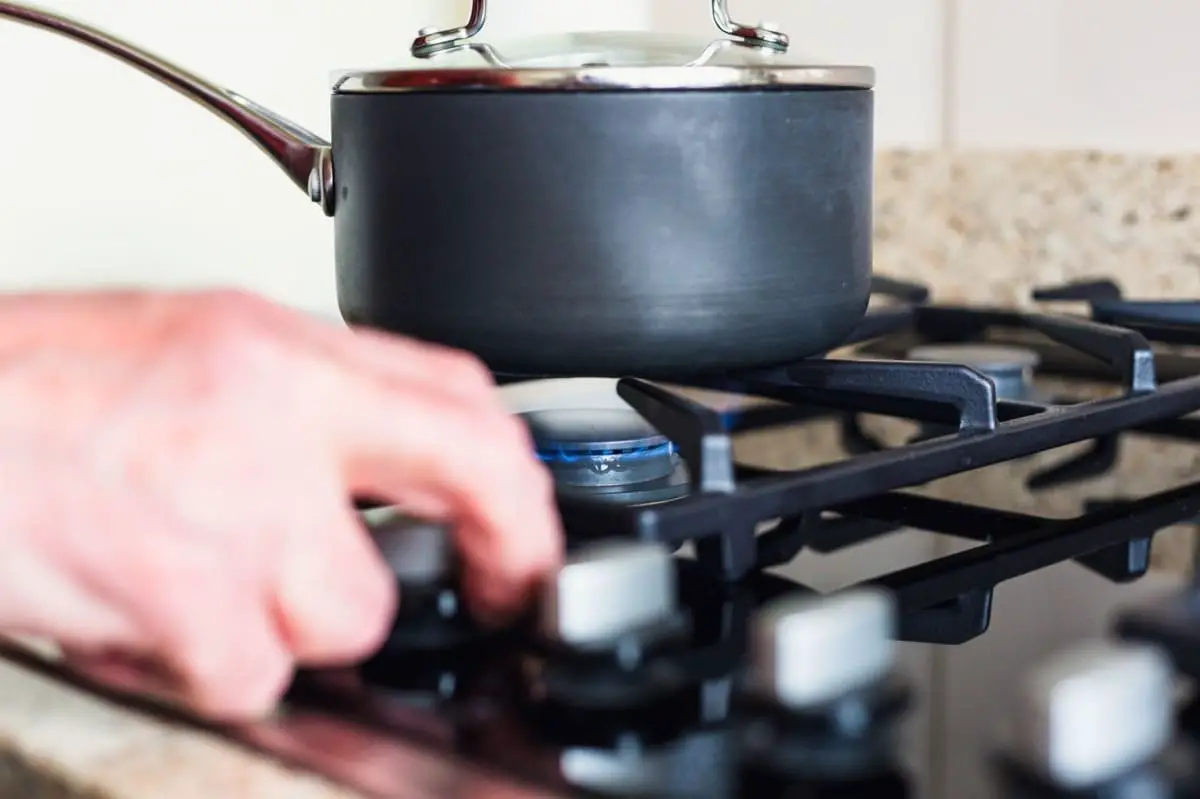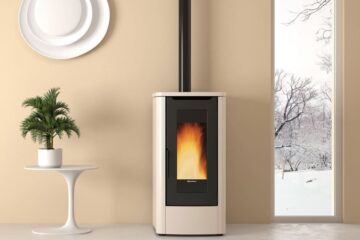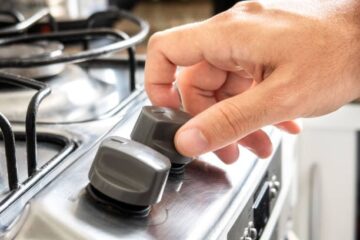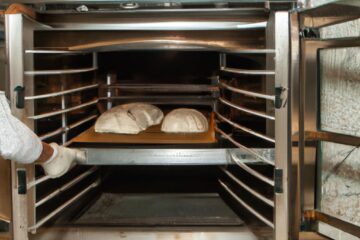When it comes to cooking appliances, stoves are one of the most common fixtures in households. They come in various sizes and types, but one question that often arises is how many amps does a stove use? The answer to this question can vary depending on the type of stove, the number of burners, and other factors.
Electric stoves, for instance, typically draw from 30 to 60 amps. The number varies depending on the type of stove and the number of elements. On the other hand, gas stoves require between 15 and 30 amps, which is easily provided by the standard 120-volt circuit found in most homes. However, certain bigger stoves might need up to 50 amps, although this is quite unusual. It’s important to know the amperage of your stove to ensure that it is compatible with your home’s electrical system and to avoid any electrical hazards.
Understanding Amps and Stoves
What are Amps?
Amps, or amperes, are a unit of measurement used to describe the amount of electrical current flowing through a circuit. This measurement is essential when connecting appliances to an electrical system to ensure that the circuit can handle the amount of current required by the device.
How do Stoves Work?
Stoves are a common household appliance that uses electricity to generate heat, which is then used for cooking or baking. They consist of a heating element and a control system that regulates the amount of heat produced.
Electric stoves typically draw in the range of 30 amps to 50 amps, depending on the dimensions and features. A normal kitchen stove with four burners and an oven altogether can draw 30, 40, or 50 amps. The appropriate wire size and voltage must be used to connect the stove to the circuit to provide the right amount of current.
When connecting a stove to an electrical circuit, it is crucial to ensure that the circuit can handle the amount of current required by the stove. A dedicated circuit is necessary to provide enough power to the stove without overloading the circuit. Electric stoves need a dedicated circuit and draw anywhere from 30 to 60 amps typically. This is quite a bit more than your average 20-amp breaker can manage.
Factors that Affect Stove Amps
When it comes to determining the number of amps a stove uses, there are several factors to consider. These factors include the type of stove, burner size, cooking temperature, and cookware type. Understanding each of these factors can help you determine the amount of power your stove requires.
Type of Stove
The type of stove you have will greatly affect the number of amps it uses. Electric stoves require more power than gas stoves because they rely on electricity to heat up the burners and oven. On the other hand, gas stoves only require electricity to power the ignition system and control panel. Therefore, gas stoves typically use fewer amps than electric stoves.
Burner Size
The size of the burner you use on your stove will also affect the number of amps it uses. Larger burners require more power to heat up and maintain a high temperature than smaller burners. Therefore, if you are using several large burners at once, your stove will consume more amps than if you were only using one small burner.
Cooking Temperature
The cooking temperature you set on your stove will also affect the number of amps it uses. The higher the temperature, the more power your stove will consume. For example, if you are cooking a dish at 400°F, your stove will use more amps than if you were cooking the same dish at 300°F.
Cookware Type
The type of cookware you use on your stove can also affect the number of amps it uses. Cookware with a flat bottom and a good thermal conductivity will heat up faster and require less power to maintain a high temperature than cookware with a warped or uneven bottom. Additionally, using cookware that is too small or too large for the burner can also lead to wasted energy and increased power consumption.
Calculating Stove Amps
When it comes to calculating the amps of a stove, there are a few factors to consider. The type of stove, the number of elements, and the voltage all play a role in determining the amps required. In this section, we will explore the formula for calculating stove amps and provide some examples to illustrate the process.
Formula for Calculating Stove Amps
The formula for calculating stove amps is straightforward. To determine the amps required for a stove, you need to divide the wattage by the voltage. The resulting number is the amperage.
Amps = Wattage / Voltage
For example, if a stove has a wattage of 6000 and a voltage of 240, the amps required would be:
Amps = 6000 / 240 Amps = 25
Examples of Stove Amp Calculations
Let’s look at a few examples to see how this formula works in practice.
Example 1: Electric Stove
Suppose you have an electric stove with a wattage of 8000 and a voltage of 240. To calculate the amps required, you would use the formula:
Amps = 8000 / 240 Amps = 33.33
Therefore, this stove would require a circuit with a minimum capacity of 40 amps to function properly.
Example 2: Gas Stove
Gas stoves typically require less amperage than electric stoves. Suppose you have a gas stove with a wattage of 5000 and a voltage of 120. To calculate the amps required, you would use the formula:
Amps = 5000 / 120 Amps = 41.67
Therefore, this gas stove would require a circuit with a minimum capacity of 50 amps to function properly.
Managing Stove Amps
When it comes to managing stove amps, there are a few things to keep in mind to ensure that your stove is functioning properly and safely. By following some simple guidelines, you can reduce your stove’s amps and prolong its lifespan.
How to Reduce Stove Amps?
One way to reduce stove amps is to use the stove’s burners and oven one at a time. This will minimize the amount of electricity that the stove is using at any given time. Additionally, using smaller burners instead of larger ones can also help reduce amps.
Another way to reduce stove amps is to use the stove’s features wisely. For example, using the oven’s convection feature can help reduce cooking times, which in turn can reduce the amount of time the oven is using electricity.
Finally, keeping your stove clean and well-maintained can also help reduce amps. A dirty stove can cause the heating elements to work harder, which can increase amps and shorten the lifespan of the stove.
Safety Precautions
When managing stove amps, it’s important to keep safety in mind. Here are some safety precautions to follow:
- Make sure that your stove is properly installed and grounded.
- Do not use the stove if it has frayed cords or damaged heating elements.
- Do not leave the stove unattended while it’s in use.
- Keep flammable materials away from the stove.
- Make sure that the stove’s ventilation system is working properly to prevent carbon monoxide buildup.
Conclusion
In conclusion, the amperage of a stove depends on various factors, such as the size and features of the stove. The larger the stove, the higher the amperage it requires, while the smaller the stove, the lower the amperage it requires. On average, a stove uses between 30 to 50 amps of electricity when turned on at its maximum capacity.
Electric stoves have larger amperage requirements compared to gas stoves. The largest burners on an electric stove typically pull around 2,500 watts when turned on to the highest setting. On average, medium-size burners pull between 1,500 and 1,800 watts on the high setting, while small or simmering burners pull an average of 1,200 watts.
Gas stoves, on the other hand, can draw up to 12 amps of current depending on their features, with dual fuel stoves reaching 30 amps or more. Some gas stove models require electricity to power some of their features like convection fans, lights, igniters, and controls.




